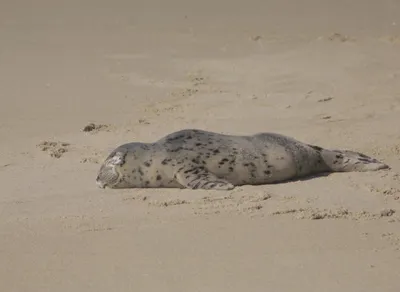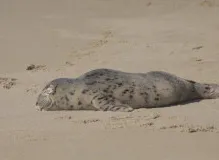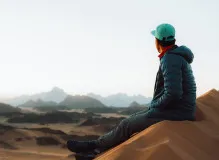For over long years, we have diligently conducted independent research and product testing. When you make a purchase through our links, we may earn a commission.
The Benefits of Trekking: Exploring Nature, Fitness, and Adventure
Created: 6 minutes ago

7 min Read
Trekking is an exhilarating outdoor activity that combines the joy of exploring nature, the benefits of physical fitness, and the thrill of adventure. Whether you are an experienced hiker or a beginner looking to embark on your first trekking adventure, this article will delve into the various aspects of trekking and highlight its many benefits. From stunning landscapes to improved mental well-being, let's uncover the magic of trekking and inspire you to hit the trails!
1. Introduction to Trekking
Trekking, also known as hiking, is the act of walking long distances across challenging terrains and experiencing the beauty of the great outdoors. It involves traversing mountains, forests, valleys, and other natural landscapes, often leading to breathtaking views and hidden gems that are inaccessible by road. Trekking can range from a leisurely day hike to a multi-day expedition, catering to individuals of all fitness levels and adventure preferences.
1.1 Trekking vs. Hiking: Is There a Difference?
Although the terms "trekking" and "hiking" are often used interchangeably, slight differences set them apart. Trekking typically involves longer journeys that span several days, often including overnight stays in tents or lodges. On the other hand, hiking is generally a shorter and less strenuous activity, typically completed within a day. For the purposes of this article, we will use the terms interchangeably to cover both short hikes and extended treks.
1.2 Trekking Around the World
One of the most enticing aspects of trekking is the opportunity to explore magnificent destinations around the world. From the rugged trails of the Himalayas to the iconic peaks of the Andes, there are countless trekking routes that offer unique experiences. Whether you dream of trekking to the basecamp of Mount Everest, uncovering the hidden paradise of Patagonia, or discovering the ancient ruins of Machu Picchu, the possibilities are endless.
2. Physical Benefits of Trekking
Trekking is not only a great way to connect with nature but also offers numerous physical benefits. By engaging in this outdoor activity, you can improve your cardiovascular health, strengthen your muscles, and enhance your overall fitness level.
2.1 Cardiovascular Health & Endurance
Regular trekking strengthens your heart, improving blood circulation and increasing your cardiovascular endurance. Trekking involves continuous walking on varied terrains, elevating your heart rate and challenging your cardiovascular system. This can help lower the risk of heart disease, reduce high blood pressure, and improve overall heart health.
2.2 Increased Strength and Muscle Tone
Trekking puts your muscles to work as you navigate through different terrains, including steep ascents and descents. The constant movement and weight-bearing nature of trekking engage various muscle groups, such as the quadriceps, hamstrings, calves, and glutes. Over time, this can lead to increased muscle strength, improved tone, and enhanced overall body stability.
2.3 Weight Loss and Improved Metabolism
Trekking is an effective way to burn calories and shed excess weight. The combination of walking for long durations and challenging terrains increases your metabolic rate, helping you burn fat and lose weight. According to experts, trekking for one hour can burn approximately 400-600 calories, depending on factors such as speed, incline, and body weight.
3. Mental and Emotional Well-being
Apart from the physical benefits, trekking also has a profound impact on mental and emotional well-being. The peacefulness of nature, the sense of achievement from completing a challenging trek, and the opportunity for introspection contribute to improved mental health.
3.1 Stress Reduction and Improved Mood
Spending time in nature and engaging in physical activity has been shown to reduce stress levels and elevate mood. Trekking allows you to disconnect from the hustle and bustle of daily life, providing a much-needed escape and an opportunity to recharge. The release of endorphins during physical exertion promotes a sense of happiness, reduces anxiety, and improves overall emotional well-being.
3.2 Boost in Self-confidence and Resilience
Trekking often presents various challenges, both physical and mental. Successfully completing a difficult trek or conquering a steep ascent instills a sense of accomplishment and boosts self-confidence. Moreover, trekking requires resilience and the ability to adapt to changing conditions, such as weather fluctuations or unexpected obstacles, promoting a growth mindset and enhancing personal resilience.
3.3 Mindfulness and Connection with Nature
Trekking offers a chance to immerse oneself in the natural world, allowing for moments of mindfulness and connection with nature. As you traverse scenic landscapes and breathe in the fresh air, you become more present in the moment, fostering a sense of tranquility. This connection with nature can help reduce anxiety, improve focus, and provide a much-needed break from the constant stimulation of technology and urban environments.
4. Preparing for a Trek: Essential Tips and Gear
Before embarking on a trekking adventure, it is crucial to prepare adequately to ensure a safe and enjoyable experience. This section provides essential tips and highlights the gear needed to make the most out of your trekking journey.
4.1 Choosing the Right Trekking Route
When selecting a trekking route, consider factors such as difficulty level, duration, and the natural beauty of the destination. Beginners may opt for shorter and less challenging treks, while experienced trekkers might seek more demanding adventures. Researching and understanding the route beforehand is essential for proper preparation.
4.2 Physical Fitness and Training
Trekking can be physically demanding, requiring a certain level of fitness. In the weeks leading up to your trek, engage in regular aerobic exercises, such as walking, jogging, or cycling, to build your stamina and endurance. Additionally, try to incorporate strength training exercises to strengthen your leg muscles and core, as these will support you throughout the journey.
4.3 Packing the Essential Gear
Having the right gear is vital for a successful and comfortable trek. Consider the following items when packing for your adventure:
- Hiking Shoes: Invest in a sturdy pair of hiking shoes that provide ankle support and proper traction.
- Appropriate Clothing: Dress in layers to accommodate changing weather conditions. Opt for moisture-wicking and quick-drying fabrics, such as polyester or merino wool.
- Backpack: Choose a backpack with ample storage space and ergonomic features. Ensure it is comfortable to carry for long durations.
- Navigation Tools: Carry a map, compass, and/or GPS device to navigate through the trails effectively.
- Hydration and Food: Carry enough water to stay hydrated throughout the trek. Pack high-energy snacks and meals, such as trail mix, energy bars, and dehydrated meals.
- First Aid Kit: Include essential medical supplies, such as bandages, antiseptic ointment, painkillers, and blister treatment.
For a comprehensive gear list tailored to your specific trekking destination, consult websites and experienced trekkers familiar with the region.
5. Environmental Conservation and Ethical Trekking
Trekking brings people closer to natural environments and offers an opportunity to appreciate the beauty and value of our planet. However, it is essential to engage in ethical trekking practices to minimize our impact on fragile ecosystems and ensure the preservation of these natural wonders.
5.1 Leave No Trace Principles
Adhering to the Leave No Trace principles is crucial when trekking to minimize environmental impact and respect local communities. These principles include:
- Plan Ahead and Prepare: Research the route, be aware of regulations, and pack only what is necessary.
- Travel and Camp on Durable Surfaces: Stick to established trails and camp only in designated areas to avoid damaging fragile ecosystems.
- Dispose of Waste Properly: Pack out all trash and dispose of it in appropriate waste receptacles. Follow guidelines for human waste disposal.
- Leave What You Find: Avoid disturbing natural or cultural artifacts. Appreciate and photograph them from a distance.
- Minimize Campfire Impact: Use a camping stove instead of open fires whenever possible. If campfires are allowed, use established fire pits and ensure they are fully extinguished before leaving.
- Respect Wildlife: Observe animals from a safe distance and do not feed or approach them. Adhere to regulations when encountering endangered or protected species.
- Be Considerate of Other Visitors: Respect fellow trekkers and local communities. Keep noise levels low, yield to others on the trail, and follow any specific guidelines provided.
5.2 Supporting Local Communities and Conservation Efforts
When undertaking a trek, consider supporting local communities and conservation efforts. Opt for locally-owned accommodations, hire local guides or porters, and purchase locally-made souvenirs or products. Additionally, seek out treks that contribute to conservation initiatives or support sustainable tourism practices, ensuring that your adventure has a positive impact on both the environment and local communities.
6. Conclusion
Trekking offers a perfect blend of physical activity, mental rejuvenation, and close encounters with nature. From the breathtaking landscapes to the physical and mental benefits, embarking on a trekking journey can be a life-transforming experience. Whether you are a nature enthusiast, fitness enthusiast, or adventure seeker, the world of trekking offers a multitude of opportunities to explore and discover the wonders of our planet. So, lace up your hiking boots, pack your backpack, and embark on a trekking adventure that will take you to new heights, both literally and metaphorically.
"In every walk with nature, one receives far more than he seeks." - John Muir
Frequently Asked Questions (FAQs)
What is trekking?
Trekking refers to the activity of walking or hiking on trails or paths, usually in remote, natural areas.
Why is trekking a popular activity?
Trekking is popular because it allows people to explore and connect with nature, challenge themselves physically, and experience the thrill of adventure.
What are the benefits of trekking?
Trekking offers numerous benefits such as improved physical fitness, stress reduction, mental relaxation, enhanced endurance, and an opportunity to discover new landscapes and cultures.
Does trekking help with physical fitness?
Yes, trekking is a great way to improve physical fitness as it involves walking long distances on various terrains, which enhances cardiovascular health, strengthens muscles, and boosts overall stamina.
How does trekking contribute to mental well-being?
Trekking allows individuals to disconnect from their everyday lives, spend time in nature, and enjoy moments of solitude. This helps reduce stress, clear the mind, and promote mental relaxation and rejuvenation.
What should I consider before going on a trek?
Before going on a trek, it is important to plan and prepare adequately. This includes choosing the right trekking destination, obtaining necessary permits, packing appropriate gear and clothing, and ensuring good physical fitness.

